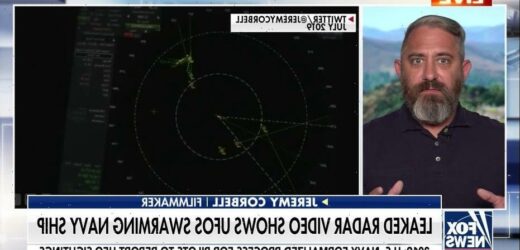Pentagon confirms footage of UFOs harassing east coast warships at 160 mph
Filmmaker Jeremy Corbell discusses footage he first posted to Twitter
A top astrophysics professor penned a column published Sunday that addresses the recent buzz around UFO sightings by U.S. Navy personnel and the highly anticipated report on these sightings due out in the summer.
These videos have piqued the country’s fascination due to their perceived maneuverability. How is it possible that an object in the shape of a jelly bean seems capable of flying circles around our most advanced fighters? And what does it say about our security if these objects have been produced by an adversary?
Adam Frank, the professor from the University of Rochester, wrote a column in the New York Times titled, “I’m a Physicist Who Searches for Aliens. UFOs Don’t Impress Me.” He wrote that he has been asked about these documented encounters because of his resume. (He won a recent grant from NASA to search for some kind of advanced technology on planets in far-away solar systems.)
He pointed to the videos that aired on CBS’ “60 Minutes” that were captured by U.S. Navy pilots. He is skeptical of how much those videos can teach us about the objects.
“While some researchers have used the footage to make simple estimates of the accelerations and other flight characteristics of the UFOs, the results have been mixed at best. Skeptics have already shown that some of the motions seen in the videos (like the ocean skimming) may be artifacts of the cameras’ optics and tracking systems,” he wrote.
A Pentagon watchdog is launching a probe into how the Department of Defense has addressed “Unidentified Aerial Phenomena” or UAP, after a string of UFO sightings in recent years that have been spotted by military aircraft.
GET THE FOX NEWS APP
Frank said that he will read any government reports with interest, but said there may “be more prosaic explanations” like the possibility Russia and China are using drones to lure “our pilots into turning on their radar and other detectors, thus revealing our electronic intelligence capacities.”
Source: Read Full Article




